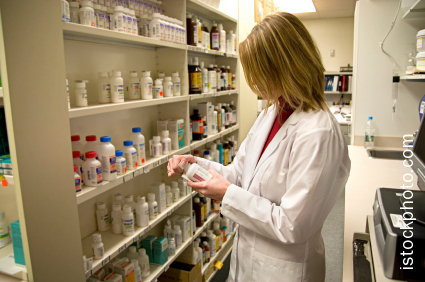Introduction
Before initiating oral antithrombotic therapy, the benefits of treatment must be weighed against the risks of bleeding. Relevant risk assessment tools, such as CHA2DS2-VASc and HAS-BLED (see modules 3 and 4), can be used to determine a patient’s thrombotic and individual bleeding risks, and to guide management decisions (e.g. whether to start antithrombotic therapy, if so with what drugs, the duration of therapy, and whether gastroprotection is required).
It is good practice before initiating antithrombotics to ensure a full coagulation screen has been undertaken (including INR and activated partial thromboplastin time [APTT]), as well as a full blood count, and renal and liver function tests to identify any inherent bleeding issues.
Pharmacists play an integral role as members of a multidisciplinary team, ensuring that patients receive the correct drug and dose in a timely manner. They must also consider patient factors such as renal and hepatic dysfunction, as well as drug factors, such as interactions or drugs predisposing the patient to a greater risk of adverse effects (e.g. bleeding with non-steroidal anti-inflammatory drugs [NSAIDs]).
 While warfarin remains the most commonly prescribed anticoagulant, it is essential to be aware of the responsibilities of all anticoagulant therapy – that is:
While warfarin remains the most commonly prescribed anticoagulant, it is essential to be aware of the responsibilities of all anticoagulant therapy – that is:
- to ensure the anticoagulant is appropriate for the individual patient (involving the patient in decision making)
- to initiate anticoagulant treatment with appropriate liaison between prescribers and anticoagulation clinics for ongoing monitoring and supply. This should take into consideration the needs of the patient (which may include home monitoring and initial supply of reagent strips)
- to ensure the patients receive the relevant anticoagulant card, and particularly for warfarin, the monitoring book, which allows any healthcare professional to review INR control.
Commissioning effective anticoagulation services
There are approximately 1.25 million people in the UK on anticoagulant therapy.1 Although the need for anticoagulation is expected to increase in coming years as the UK population ages and the rates of atrial fibrillation (AF) rise, it is estimated that 40% of people with AF at risk of stroke are not being anticoagulated. Evidence suggests that without adequate anticoagulation, one in 20 AF patients will suffer a stroke every year.2 This has led to the improvement of anticoagulation becoming a national quality, innovation, productivity and prevention (QIPP) initiative.
Anticoagulation Europe has a resource pack for commissioners involved in commissioning anticoagulation services for the future, which may be particularly relevant for pharmacists involved in this process.1
The relatively newer non-vitamin K antagonist oral anticoagulants (NOACs) require initiation by clinicians within secondary care before transferring care to GPs. Before patients are discharged, an agreement – also referred to as a shared care guideline (SCG) – is sent to the GP. This SCG outlines the responsibilities of the patient, clinicians in secondary and primary care, the duration of treatment supplied by the hospital, and monitoring requirements (if any). Shared care guidelines can be found locally within hospitals and Clinical Commissioning Groups (CCGs).
